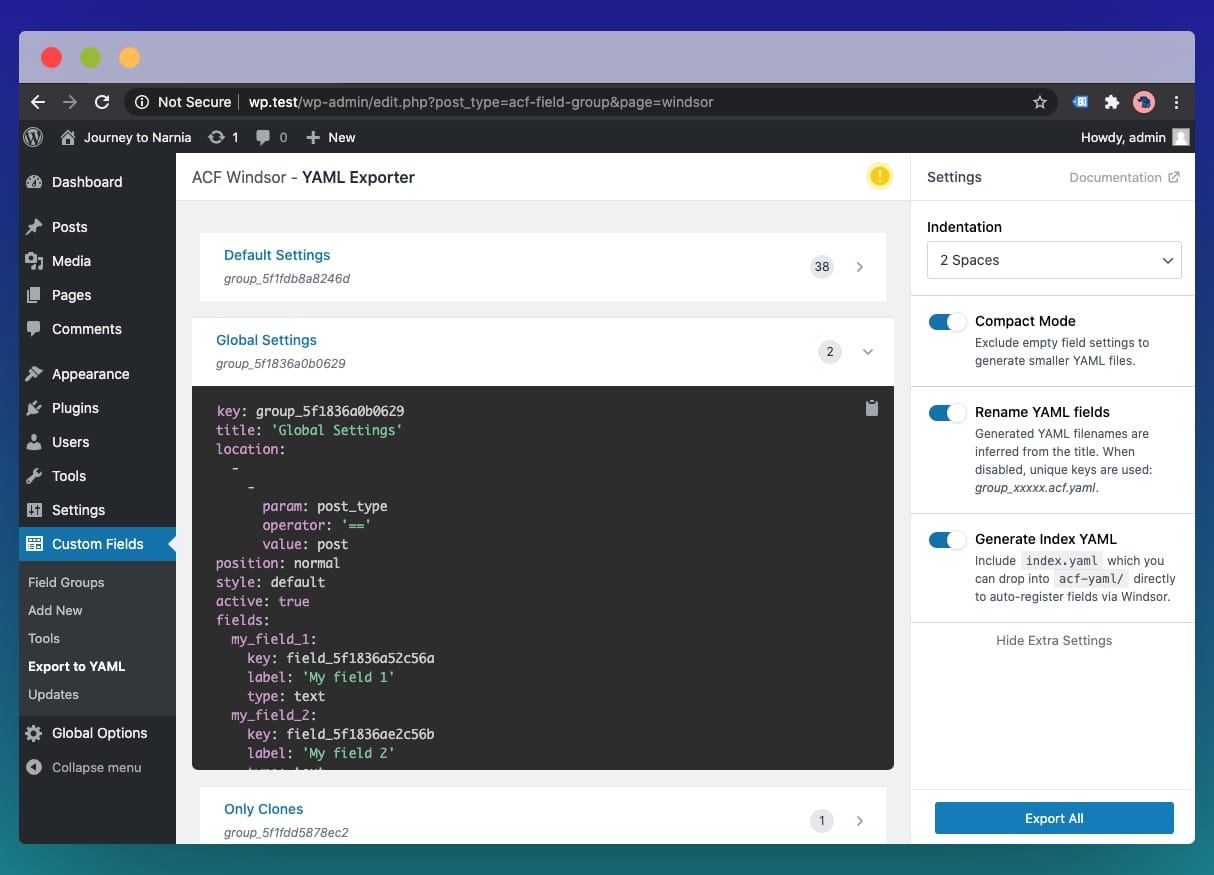# Configurations
To configure Windsor's behaviour, you may use the acf-windsor/config filter. For example:
function modify_windsor_config($config) {
return array_merge($config, [
// Change the location of YAML files
'path' => get_stylesheet_directory() . '/custom-path',
]);
}
add_filter('acf-windsor/config', 'modify_windsor_config');
$config is an array holding configuration values as explained below.
# debug
Boolean flag to enable debug mode. This is useful during development when troubleshooting issues.
Defaults to false
# ui
You can set this to true to enable YAML export tool which will can be accessed within WordPress administration backend.

Optionally, you can further configure this behaviour by supplying array to the ui configuration:
function modify_windsor_config($config) {
return array_merge($config, [
'ui' => [
// {boolean} Same effect as `'ui' => true`
'enabled' => true,
// {boolean} Use this to inline Windsor's styles and scripts.
// This is useful when working with WordPress environment which doesn't allow public url access to `vendor/` directory.
'inline_assets' => true,
]
]);
}
add_filter('acf-windsor/config', 'modify_windsor_config');
This interface is turned disabled by default, and we recommend keeping it disabled when not in use.
# path
Windsor will attempt to find the entry file and all other YAML files in this location.
Defaults to acf-fields directly under your active theme directory.
# entry
The name of the entry file where fields registration happens.
Defaults to index.yaml
# parser
Instantiable parser class used to read each fields definition file.
Defaults to \Windsor\Parser\YamlParser
# rules
An array of transformation rules when transforming fields and groups.
You may also use acf-windsor/config/rules filter to modify only these rules if preferred.
For more information, refer to Transformation Rules